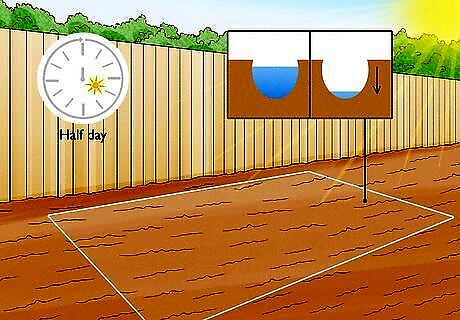
views
Planting Lilies

Find the right location. Ideally, pick a spot in your garden with good drainage and plenty of sunlight. Lilies need a well-drained planting medium, such as sand or other porous soil. To find a good drainage location, find the spot in your garden that dries out the quickest after a pour of rain. If there is no obvious location, plant your lilies on a slope, and let gravity take care of your drainage. Find a spot that gets sunshine at least half the day. Too long in the shade, and the lilies will reach for the sun, and take on a noticeable lean. A full day's sun is ideal. Lily leaves can be infested with fungal botrytis if the planting location is less than ideal. While botrytis is great for certain types of wine grapes, it reduces the leaf area used for manufacturing the sugars that will result in healthy new bulbs.

Plant the bulbs when you get them. Lily bulbs come ready to plant, and lack a papery covering known as a "tunic" that keeps bulbs from drying out. The sooner you plant your bulbs after receiving them, the better they will perform. If you cannot plant them immediately, keep them in a cold, dark place (such as your refrigerator—as long as it's kept above freezing). Do this to keep them from sprouting, for once they do, you'll need to plant them. Plant them in the fall or early winter to have them bloom in the spring. You can also plant them in the spring, and they will bloom later in the year. The will bloom "normally" the following spring.

Dig a hole. Lilies like the sun, but their bulbs prefer to stay cool during the summer. Digging a hole about 12 to 15 inches (30 to 38cm) deep, and keep in mind that deeper is better—not only will the bulbs be protected from potentially hot summers, it will also provide good support for the stems. Your holes should be 2 to 3 times as deep as the bulb itself. Plant the bulb with the pointed side up. You can also plant them in a raised bed: plant them at ground level, then put 4 to 6 inches (10 to 15cm) of soil on top of them. This will also promotes good drainage. Space them properly. If you're planting multiple lilies, give each lily about a 6-inch radius so that they have their own place in the sun. Loosen the dirt at the bottom of the hole, sprinkle a little bone meal into the bottom, then place the lily bulbs inside and cover with dirt. Water immediately. This will ensure that damp soil comes in contact with the roots, encouraging growth.

Add mulch. Lilies appreciate it if you add some organic material to help keep the surrounding soil cool and moist. Spread compost, rotted manure, or a longer-lasting mulch like bark mulch, wood ships, or cacao shells around the plant. If you're expecting cold weather, lay a top coating of mulch over the plantings to protect the shoots. Trumpet lilies are the most vulnerable to frost damage. Make sure you keep your mulch slug-free! They would love to munch on your emerging lily shoots.
Caring for Your Lilies

Fertilize your lilies. When they first push up shoots, add a little well-balanced fertilizer. Lilies are fairly hardy, and don't require a lot of fertilizer. In fact, too much nitrogen can result in weak stems, and in hot, wet climates can also result in bulb rot. For optimal results, choose a high-potassium liquid fertilizer. Apply this every two weeks from early spring until 6 weeks after the plant flowers. Fertilize when first sprouting, and again about a month later.

Water your lilies only as needed. Lilies generally don't need a lot of water, so only water if required. Asiatic lilies, Trumpets, and Orienpets flourish in hot, dry climates, as long as they have enough water up to flowering time. Orientals need watering during the summer, as they do not blossom until August. Adding mulch in the summer helps keep the bulbs cool, and so lowers the need for additional watering.

Protect from freezing. During winter months, cover the lily bed with straw or evergreen boughs to protect the bulbs from freezing.

Keep the lilies trimmed. During the flowering season, trim the spent blooms, keeping at least 2/3s of the stem intact to keep your strong and healthy for years to come.




















Comments
0 comment